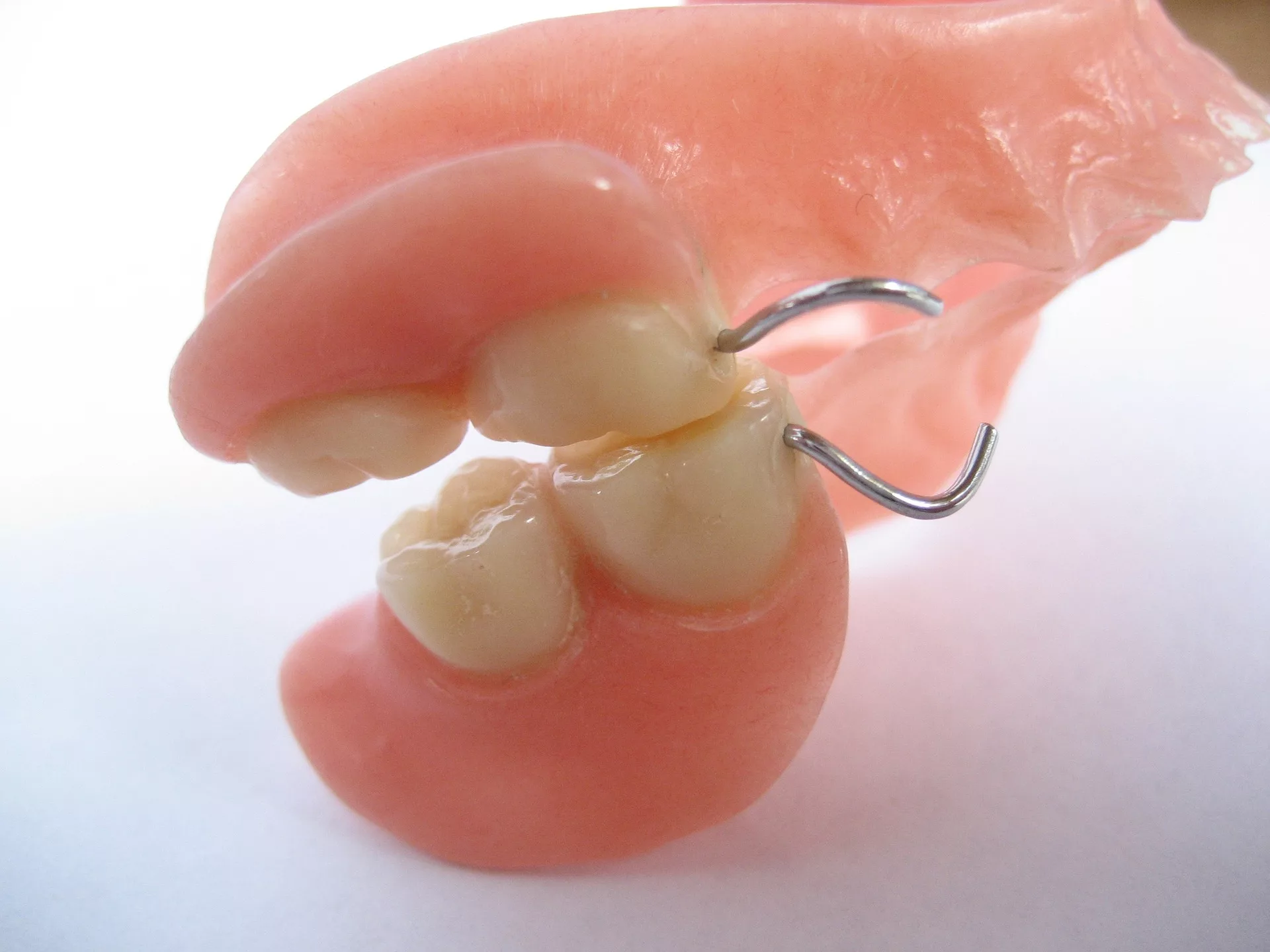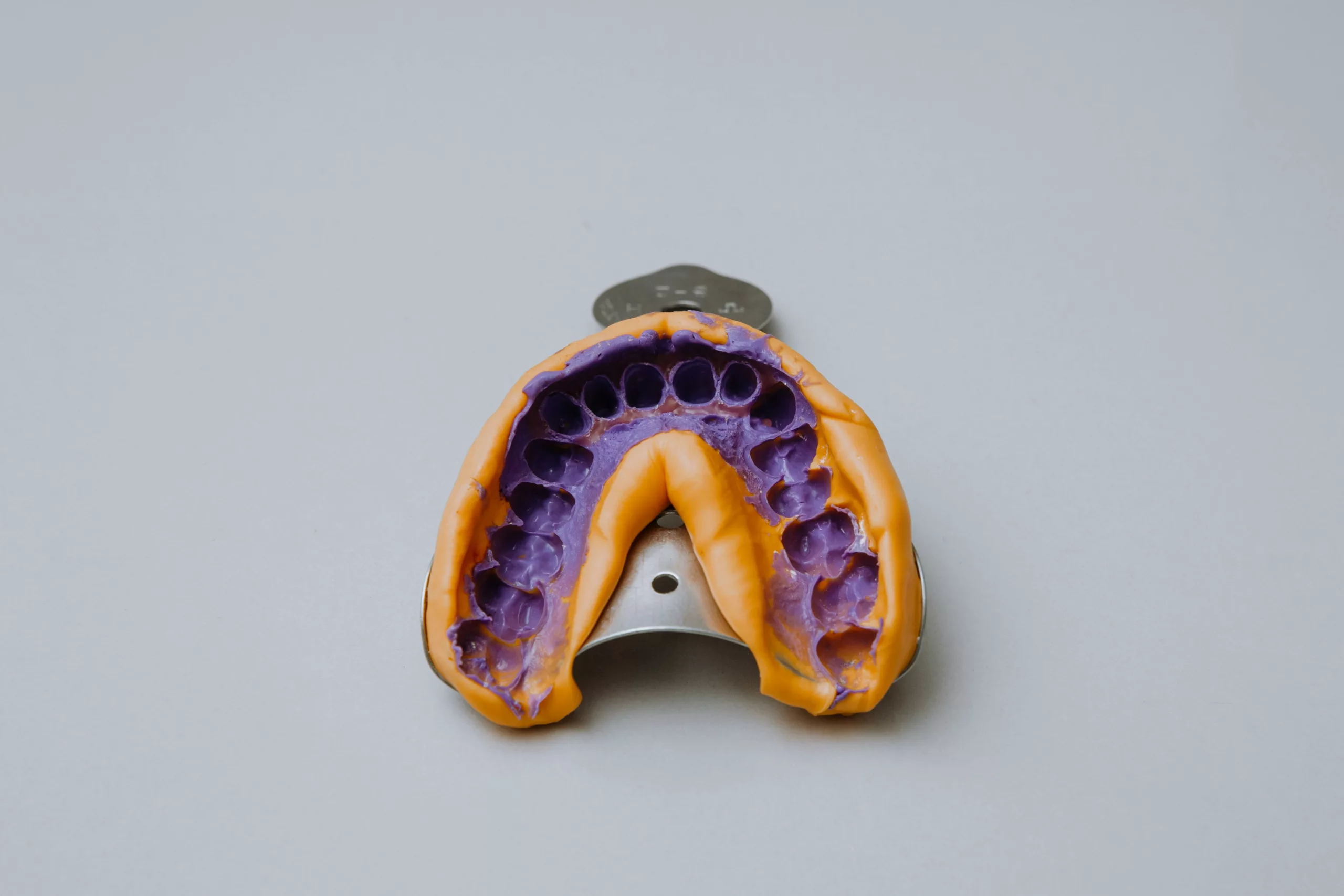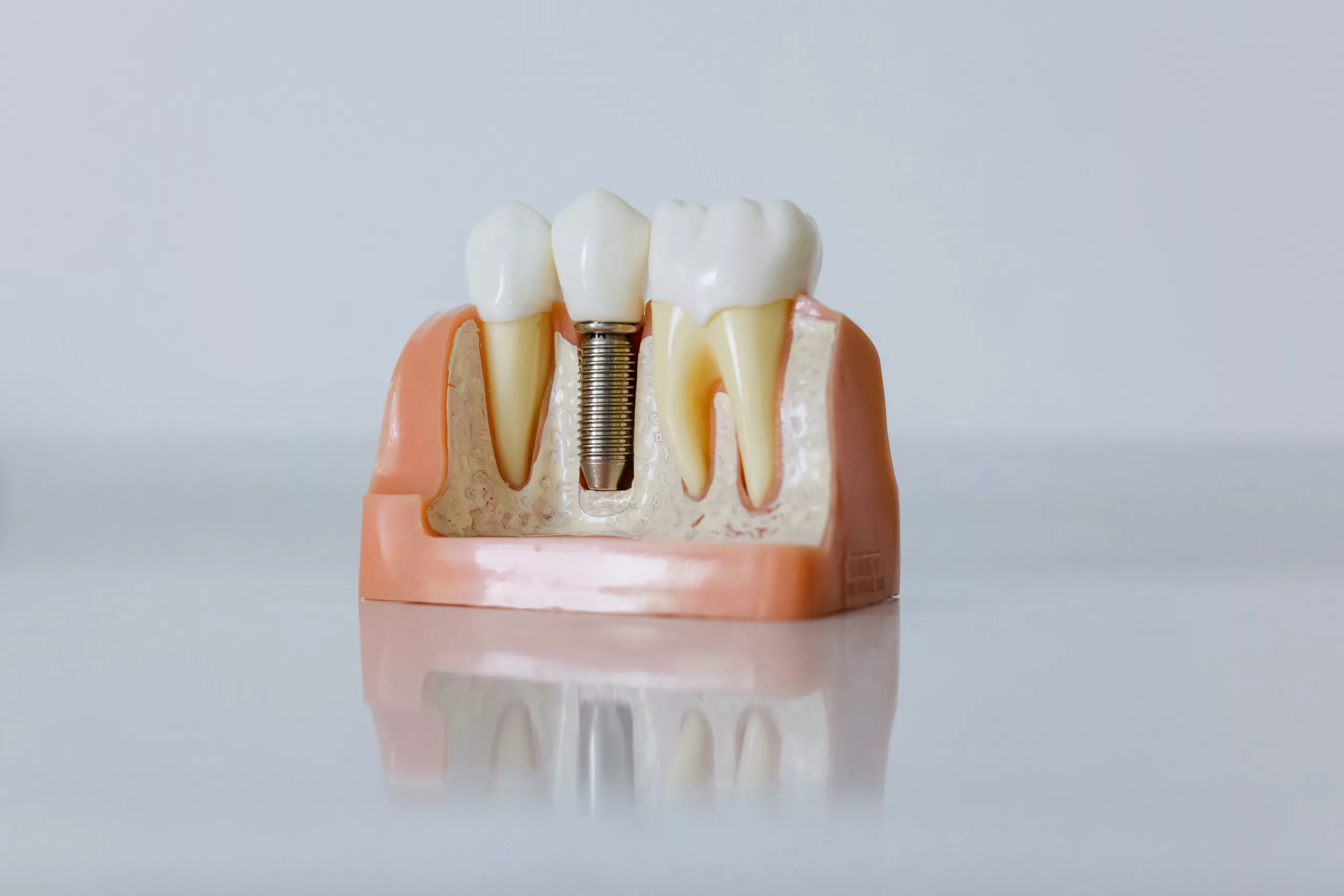A dental flipper or flipper tooth is a dental prosthesis that replaces your missing tooth/teeth. It is a temporary denture provided to the patient while the partial denture is being prepared. Therefore, it is also known as an interim removable partial denture. A temporary dental flipper is a removable device that rests on the gums and bone (upper or lower jaw) and takes retention from the neighboring teeth via retainer-like wires (called clasps). Dental flippers are made out of lightweight acrylic resin. Most dentists prefer giving a partial dental flipper when replacing one or two teeth. It can also act as a space maintainer in pediatric patients. A flipper tooth is the most affordable dental prosthetic available.

Benefits Of an Acrylic Flipper
A flipper tooth can serve both aesthetic and functional purposes.1Campbell, S. D., Cooper, L., Craddock, H., Hyde, T. P., Nattress, B., Pavitt, S. H., & Seymour, D. W. (2017). Removable partial dentures: The clinical need for innovation. The Journal of Prosthetic Dentistry, 118(3), 273-280. However, in most cases, a flipper dental appliance is given after the front teeth extraction. A temporary denture is required to fill the gap as permanent prostheses take time to manufacture and are placed only after optimal bone healing (post-extraction).
Esthetics:
The gum part of a flipper accurately mimics the gums, and the anatomy of the teeth is also carefully matched. You can adorn a beautiful smile (with a front temporary flipper) even while your bone heals after extraction.
Affordability:
A dental flipper is the most affordable dental replacement. Some experts argue that it can be used as a permanent prosthesis.2Wilson, V. J. (2009). Acrylic partial dentures-interim or permanent prostheses?: communication. South African Dental Journal, 64(10), 434-440.
Easy/Quick Preparation:
A flipper tooth is light on the pocket, and its preparation is equally quick and easy. You do not have to wait for long periods or undergo extensive oral procedures to get it.
Ease of Use:
Inserting and removing a flipper is easy; most patients have no trouble popping in and out the denture.c
Space Maintenance:
Extraction of a tooth causes shifting/tilting of the neighboring teeth. A flipper in place stabilizes the existing teeth. Therefore, a flipper can be used to maintain space in pediatric patients until permanent teeth erupt.3Aswanth, K., Asokan, S., & John, B. (2014). Fixed functional space maintainer: A weight gainer: A case report. Journal of Indian Academy of Dental Specialist Researchers, 1(1), 25-25.
Drawbacks Of a Dental Flipper
The affordable dental prosthesis also has some drawbacks that you should be aware of:
Maintenance:
The greatest drawback of using a removable dental flipper is the maintenance required to keep it clean. Patients must remove the prosthesis before bedtime and brush it regularly to prevent plaque accumulation.4Preshaw PM, Walls AW, Jakubovics NS, Moynihan PJ, Jepson NJ, Loewy Z. Association of removable partial denture use with oral and systemic health. J Dent. 2011 Nov;39(11):711-9. doi: 10.1016/j.jdent.2011.08.018. Epub 2011 Sep 8. PMID: 21924317.
Durability:
The lightweight acrylic resin is sturdy but not durable enough to withstand strong masticatory forces for long. Thus, cracking of flipper teeth is a frequently encountered problem.
Adjustment Issue:
Multiple problems reduce the acceptance of acrylic dentures among patients. Most patients report difficulty eating and pronouncing words with a conventional acrylic denture and have to learn to adjust.5Akinyamoju, C. A., Dosumu, O. O., Taiwo, J. O., Ogunrinde, T. J., & Akinyamoju, A. O. (2019). Oral health-related quality of life: acrylic versus flexible partial dentures. Ghana Medical Journal, 53(2), 163-169. Dental flippers also tend to get loose over time, requiring extra visits to the dentist for correction.
Gum Issues:
Improper care and cleansing can lead to tooth decay and gum disease. As it comes in intimate contact with the gums, a dental flipper carries the risk of gum recession.
Acrylic Allergy:
A large number of individuals are allergic to methacrylates.6Kucharczyk, M., Słowik-Rylska, M., Cyran-Stemplewska, S., Gieroń, M., Nowak-Starz, G., & Kręcisz, B. (2021). Acrylates as a significant causes of allergic contact dermatitis–new sources of exposure. Advances in Dermatology and Allergology/Postępy Dermatologii i Alergologii, 38(4), 555-560. Thus, discussing your allergy history before getting the flipper is important.
How is a Flipper Tooth Made?
The dentist takes your impression of the upper and lower jaws. Sodium alginate and addition silicone are commonly used soft impression materials. Modern operatories use 3-D scanners to take a digital impression.

A cast is prepared from the impression and sent to a dental laboratory. At the lab, a technician makes a customized flipper tooth (out of acrylic resin) based on the edentulous area (space). The dentist then inserts the dental flipper in the patient’s mouth and guides them through the care instructions.
Care Instructions for a Flipper
Dental flipper care instructions are simple and easy to follow. Regular maintenance of the flipper tooth requires cleaning it every day to prevent plaque accumulation.
Remove your flipper at night (before bed) and store it in a specified dry container. In the morning, brush your flipper denture like you brush your teeth. You can use a soft-bristle toothbrush to cleanse it under warm water. Some patients also use small volumes of dishwashing liquid to clean the flipper’s surfaces. Avoid using toothpaste, as the abrasives inside can damage it.
A dental flipper must sit tightly on your teeth. Report to the dentist if you feel any loosening or pain/discomfort. A simple adjustment by the dentist can set it right, but delaying it can harm your gingiva. You may also avoid heavily pigmented foods such as beets and coffee because they tend to stain the flipper.
Dental Flipper Alternatives
A flipper tooth is not a permanent solution to a missing tooth. Thus, there are multiple alternatives to it.

Dental Flipper Vs. Partial Denture
A removable partial denture refers to a dental prosthesis that replaces some (not all) teeth and can be removed from the oral cavity. An acrylic flipper is in fact a type of partial denture. However, you get two more types of partial dentures that can be compared with the flipper.
Cast Partial Denture
Unlike a dental flipper’s complete acrylic body, a cast partial denture has a supporting metal framework. The cast metal base is made of Chromium-Cobalt alloy with an acrylic body. It provides sufficient support. This type of denture uses precision attachments to improve esthetics.
Flexible Partial Denture
A modern removable prosthetic option for replacing missing teeth is the flexible partial denture. These advanced dentures are made from thermoplastic materials such as nylon, Thermoflex, etc, which adapt to the oral structures. Flexi-dentures have superior esthetics, thanks to the gum-colored clasps (instead of the bland wire clasps on a flipper). Due to their better aesthetics and high comfort level, flexible dentures have high patient acceptance.7GOMES, S. G. F., & CURY, A. A. D. B. (2015). Flexible resins: an esthetic option for partially edentulous patients. RGO-Revista Gaúcha de Odontologia, 63, 81-86.
Dental Flipper Vs. Dental Bridge
A dental bridge is a more reliable and permanent solution for missing teeth. The fixed partial denture is cemented to the prepared teeth and remains in the mouth without the need to take it out. Different materials to prepare a dental bridge include metal, porcelain fused to metal, zirconium, and lithium disilicate (Emax). The only drawback is that it requires neighboring teeth to be filed down for crown placement.
Dental Flipper Vs. Dental Implant
The safest and closest-to-originality way of replacing a tooth is dental implants. A dental implant is the most advanced prosthesis that takes support from the bone. It consists of two parts, a screw that is drilled into the jaw bone and a crown (the tooth part visible in the oral cavity) attached to the screw. Like a natural tooth, an implant distributes the masticatory forces into the bone, thus making it the most viable option. Dentists also prepare implant-supported bridges to replace complete arches in edentulous patients.
Dental Flipper Vs. Essix Retainer
An Essix retainer is a clear retainer similar to an orthodontic aligner. However, unlike clear aligners, these plastic retainers do not induce tooth movement but rather keep teeth in place. Generally, Essix retainers are given after orthodontic treatment is completed to prevent treatment relapse.8Giancotti, A., Mozzicato, P., & Mampieri, G. (2020). Thermoformed Retainer: An Effective Option for Long-Term Stability. Case reports in dentistry, 2020, 8861653. https://doi.org/10.1155/2020/8861653
Your Essix retainer can do more than just hold your teeth in place. Dentists now add an artificial tooth to replace your missing tooth. As it sits tightly on the teeth, retention is not a problem. However, an Essix retainer is more of an aesthetic way of covering the edentulous gap and offers fewer functional benefits.
Final Word
A dental flipper is a temporary, removable prosthesis made out of lightweight acrylic resin. It acts as an interim removable denture until the permanent prosthesis is being prepared or while the wounds heal after extraction. A flipper tooth is the most affordable and quickly prepared dental prosthesis. The need for regular maintenance and low strength are some drawbacks that reduce patient acceptance. Alternatives to a flipper include cast partial dentures, dental bridges, dental implants, and essix retainers.
Refrences
- 1Campbell, S. D., Cooper, L., Craddock, H., Hyde, T. P., Nattress, B., Pavitt, S. H., & Seymour, D. W. (2017). Removable partial dentures: The clinical need for innovation. The Journal of Prosthetic Dentistry, 118(3), 273-280.
- 2Wilson, V. J. (2009). Acrylic partial dentures-interim or permanent prostheses?: communication. South African Dental Journal, 64(10), 434-440.
- 3Aswanth, K., Asokan, S., & John, B. (2014). Fixed functional space maintainer: A weight gainer: A case report. Journal of Indian Academy of Dental Specialist Researchers, 1(1), 25-25.
- 4Preshaw PM, Walls AW, Jakubovics NS, Moynihan PJ, Jepson NJ, Loewy Z. Association of removable partial denture use with oral and systemic health. J Dent. 2011 Nov;39(11):711-9. doi: 10.1016/j.jdent.2011.08.018. Epub 2011 Sep 8. PMID: 21924317.
- 5Akinyamoju, C. A., Dosumu, O. O., Taiwo, J. O., Ogunrinde, T. J., & Akinyamoju, A. O. (2019). Oral health-related quality of life: acrylic versus flexible partial dentures. Ghana Medical Journal, 53(2), 163-169.
- 6Kucharczyk, M., Słowik-Rylska, M., Cyran-Stemplewska, S., Gieroń, M., Nowak-Starz, G., & Kręcisz, B. (2021). Acrylates as a significant causes of allergic contact dermatitis–new sources of exposure. Advances in Dermatology and Allergology/Postępy Dermatologii i Alergologii, 38(4), 555-560.
- 7GOMES, S. G. F., & CURY, A. A. D. B. (2015). Flexible resins: an esthetic option for partially edentulous patients. RGO-Revista Gaúcha de Odontologia, 63, 81-86.
- 8Giancotti, A., Mozzicato, P., & Mampieri, G. (2020). Thermoformed Retainer: An Effective Option for Long-Term Stability. Case reports in dentistry, 2020, 8861653. https://doi.org/10.1155/2020/8861653

